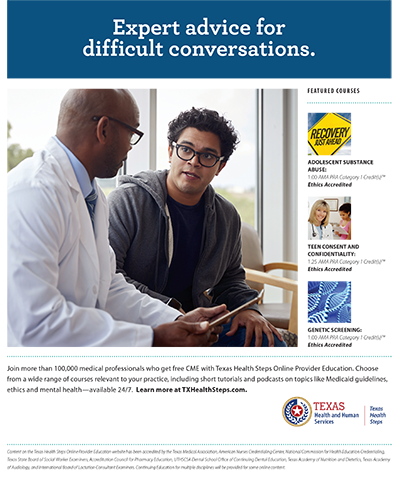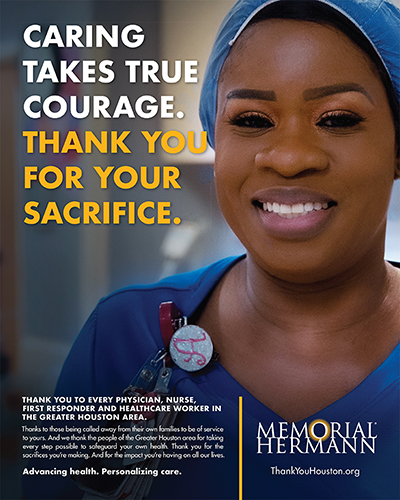 By A. Kevin Troutman, Partner, Fisher Phillips
By A. Kevin Troutman, Partner, Fisher Phillips
As the nation and its healthcare system appear to be gaining the upper hand in the COVID-19 crisis, many challenges remain. One of the biggest challenges is the toll this crisis has taken on healthcare workers across the board. Some of these challenges are obvious while others are incredibly ironic. For example, while the demands and uncertainties of this outbreak placed huge demands on parts of a hospital staff, other areas suddenly had almost nothing to do, leading to layoffs or furloughs. Likewise, many doctors’ offices, surgical centers and clinics saw their patient volumes plummet.
In the heart of battle, there were reported shortages of supplies and personal protective equipment (PPE). In some places, pockets of healthcare workers protested that working conditions were unsafe and exposed them to greater risk of contracting the COVID-19 virus. Besides a lack of adequate PPE and training in the use of PPE; inadequate infection control procedures; and staffing shortages were frequent complaints. Some unions actively encouraged employees to file complaints with state authorities, unfair labor practice charges and/or lawsuits. Reported coronavirus-related deaths and hospitalization of healthcare workers prompted the Occupational Safety and Health Administration (OSHA) to launch at least 70 inspections of healthcare facilities during the six-week period that began on March 15, and OSHA opened 15 more healthcare inspections based on worker complaints or other reports. For perspective 43 of these inspections were in New Jersey and New York. But four of these inspections were in Texas, which matches the number of fatality or catastrophe-related inspections of healthcare employers nationwide in the same period last year.

In short, the industry and many of its workers have been through a nightmarish period…and the fight is not over.
Now that the tide may be turning and more businesses are beginning to reopen, what can healthcare employers do to safeguard their employees and be prepared for the next crisis? Healthcare workers, who have repeatedly stepped up in all manner of crises in the past, are undoubtedly interested in the answers to this question. With this in mind, and the fact that this situation has been rapidly evolving from the outset, here are seven steps that healthcare employers can take to effectively address concerns and anxiety that employees may have:
- Communicate with employees: Employees want to see and recognize your commitment to keeping them safe. Distribute statements and explanation that convey your commitment to ensuring workplace and patient safety. Seek employee input, keeping the lines of communication wide open. This is not only critical to a safe and stable workplace, but it is also key to identifying employee concerns and getting ahead of matters before they escalate.
- Continue to train Your Leadership as Circumstances Evolve: Obviously, all healthcare providers should be trained in appropriate infection prevention and control as well as appropriate use of PPE and reporting procedures. But perhaps even more important, it is vital to remind leadership (including front-line supervisors) of the critical role they play in being attentive and responsive, with the help of senior management, to employee concerns. Employees must recognize that their leaders are in this battle with them, with their first priority being the safety and well-being of patients and staff.
- Review and Validate the Particulars of Your Safety Plan and Protocols. An appropriate plan should rely heavily on CDC advice and also include:
- Source control methods and a process for screening for COVID-19 symptoms or exposure: To address transmission of the COVID-19 virus, the Centers for Disease Control (CDC) has suggested implementing source control measures “for everyone entering a healthcare facility (e.g., healthcare personnel, patients, visitors), regardless of symptoms.” CDC guidance recommends actively screening “everyone for fever and symptoms of COVID-19 before they enter the healthcare facility.” As part of a screening process, consider creating a questionnaire designed to screen for COVID-19 infection or symptoms related to COVID-19. During this pandemic, the Equal Employment Opportunity Commission (EEOC) has stated that employers may ask employees if they are experiencing symptoms of the pandemic virus. For COVID-19, symptoms include: a cough, sore throat, fever, chills, shortness of breath, lost sense of taste and smell, diarrhea, and n EEOC guidance permits employers to measure body temperature, especially where the testing is job-related and consistent with business necessity, and “may choose to administer COVID-19 testing to employees before they enter the workplace to determine if they have the virus.” Employers may also want to consider inquiring as to whether the employee lives with an individual with suspected or confirmed COVID-19. You should continue to consult with legal counsel regarding the continued advisability of these measures, as guidance will almost certainly change as the status of the COVID-19 crisis evolves.

Remember that information collected on a questionnaire or from temperature checks is medical information and must be maintained in a confidential file, separate from the employees’ personnel files.
- Protocols for Employees Who Have Confirmed or Suspected COVID-19 or Who Have Had Exposure to the Virus: The CDC’s guidance on Risk Assessment Healthcare Personnel with potential exposure to COVID-19 includes recommended steps to implement, according to the level of risk exposure for healthcare providers, as well as reporting requirements. You should also develop a process for sending ill employees home and safely returning them to work following an absence related to COVID-19 illness or exposure. Again, the CDC provides helpful guidance on this specific topic. The EEOC has provided guidance on your right to request fitness for duty documentation from employees returning to work following confirmed or suspected COVID-19 infection.
- Procedures and Schedule for Regular Sanitation – CDC also provides guidance on implementing environmental infection control, including specific recommendations for cleaning and handling equipment. And it identifies specific PPE that should be worn by environmental services personnel. The hospital’s sanitation plan should include regular walk-throughs and audits of your facility with particular attention paid to patient-care areas, restrooms, dining areas, breakrooms, and waiting areas.
- Procedures for Ensuring Availability, Distribution, and Use of PPE- This is obviously a monumental issue. Once again, the CDC has issued guidance on addressing PPE shortages and recommended strategies to ensure an adequate supply of PPE and equipment. Not surprisingly, the CDC and OSHA recommend that healthcare workers exposed to COVID-19 patients wear gowns, gloves, National Institute for Occupational Safety and Health (NIOSH)-certified disposable N95 or better respirators, and eye/face protection (e.g., goggles, face shield). It is also vital to ensure that employees “are educated, trained, and have practiced the appropriate use of PPE prior to caring for a patient, including attention to correct use of PPE and prevention of contamination of clothing, skin, and the environment during the process of removing such equipment.” CDC guidance even provides instructions for putting on and taking off PPE.
- A Plan for Mitigating Staffing Shortages Caused by COVID-19: Besides reviewing existing staffing policies and supplemental staffing plans, you should consider the CDC’s recommended Strategies to Mitigate Healthcare Personnel Staffing Shortages.
- A Designated Taskforce: If you have not already done so, consider establishing a task force comprised of key leadership officials during this crisis. The task force would be responsible for coordination of activities and communications concerning infection control and safety issues, employee relations (including any and all concerns regarding the availability and appropriateness of available PPEs), and reporting confirmed or suspected COVID-19 cases to appropriate internal or external authorities.
- Update Policies: Continue to update policies and procedures that safeguard your employees, staff and patients against transmission and spread of the COVID-19 virus. Some relevant policies that you may want to develop or update include: moonlighting, reporting non-compliance with safety protocols, disclosure of COVID-19 infection or symptoms, telework (including telehealth procedures), facility access (visitors, etc.), and sick leave.
- Prepare for “Opening Up America Again:” As federal, state and local authorities begin to allow for more movement and activity, new questions and issues may also emerge. This will include consideration of how and when to re-integrate and educate any employees whose hours have been reduced or who have been furloughed. Physical safeguards, spatial changes and familiar procedures in and around the facility may need to be updated, particularly as doctor’s offices begin to see more patients and outpatient testing and other procedures begin to ramp up.
- The Devil is in the Details: Even areas as familiar as elevators, break rooms, cafeterias and parking lots may have to be overseen or viewed differently than they were just a few weeks ago. In short, before resuming activity in an area, it will be a good idea to have infection control and safety experts do a walk-through, to identify areas or systems that may have to be revised, at least temporarily.
Enlist the Assistance of Legal Counsel: Federal or state guidance related to COVID-19 is constantly evolving. It is obviously vital for healthcare institutions to stay informed of their legal rights and obligations in connection with their efforts to minimize the risk of staff and patient exposure to the COVID-19 virus while remaining fully operational.


